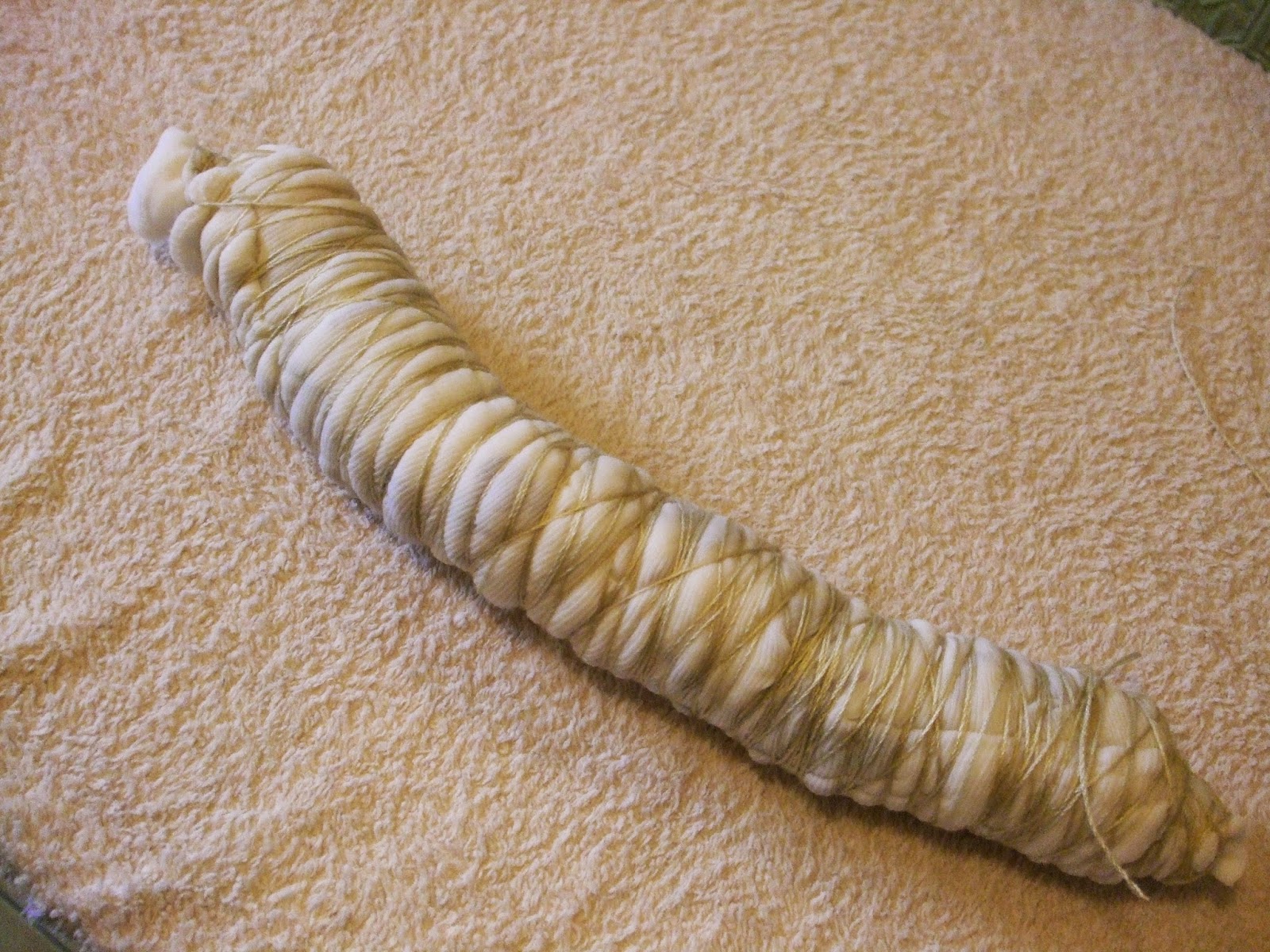I had previously used some logwood and a smaller amount of madder for solar dyeing - about 100g of logwood and about 25g of madder, which was mixed with some of the logwood.
In fact I had used these dyestuffs for three successive batches of solar dyeing. I dyed a total of 700g of wool in this way, ranging from deepest purple to a light lavender.
But this post is about what I did next with the same 125g of dyestuffs.
I put it all together in a lose mesh bag, boiled it up in my dyepot and started to dye successive 50 - 100g batches of fibre.
 |
| dyelot numbers indicate the order in which these successive batches of wool, mohair and silk were dyed in the same dyebath of pre-used logwood and madder |
I dyed wool tops, mohair tops and silk throwsters' waste in separate batches one after the other over several days - 9 batches in total. Each batch came out a different shade to the one before. The first batches were dominated by the red from the madder, so I called these carnelian shades. The later batches were more purple, from the logwood. I called these Amethyst shades.
So I had just over 600g of three different fibres in nine different shades.
59% wool, 26% mohair and 15% silk.
My plan was to blend all the fibre to get a nearly homogenous mix, before spinning.
Using my Ashford drum carder I can make batts of up to 60g, so I decided to make 10 batts.
I weighed each dyelot and divided it into 10 even portions.
Then I took one portion from each of the 9 dyelots to make each batt.
Once all of the fibre had been carded once, I split each batt in half and recarded it with half of another batt. After I had worked my way through all 10 batts, I repeated the process, so the fibre was blended and carded three times.
Yes, it was a lot of work!! Actually, cutting and teasing the tangled silk throwsters' waste to prepare it for carding was probably the slowest part.
Now I'm on to the spinning.
I'm making a woollen spun 2-ply double-knitting weight yarn, with occasional slubs or nepps where there are knots of silk. The colour is fairly even overall but with enough variation in shade, texture and lustre close up to make it interesting.
I've knitted a swatch in garter stitch, stocking stitch and horseshoe lace.
Once I know the final yardage I can decide on garment style. I have two or three different cardigans in mind....
Oh - and as if dyeing a total of 1300g of fibre with 125g of dyestuff wasn't enough - I then used the same bag of dyestuff when I was 'cooking' my eco-print experiments, to give a light mauve tint on the linen and cotton.






























